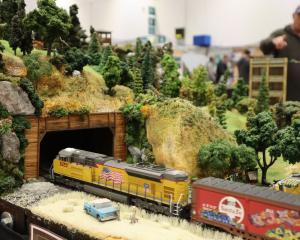
The nationally endangered birds, which nest on an island in the Upper Ōhau River, battled an unseasonal and very heavy snowfall which buried them and their nests, the Department of Conservation said in a statement yesterday.
The birds have a unique colony — the largest in the country — in the Upper Ōhau river system, where about 700 of them nest each season.
The breeding season got off to an amazing start with 360 nests, and the rangers could not believe it.
"We were so stoked to have so many nests on the island, and no signs of depredation," Department of Conservation project river recovery biodiversity ranger Sam Turner said..
Before the snow came, the rangers’ big concern was the ever-present risk of predators wiping the colony out.

"For four years in a row, we had zero fledglings due to rats and other predators, so it is a stressful time."
The unseasonal snowfall, which came in late October, led to grave fears for the birds.
"There was at least 20cm of snow blanketing the whole of the Mackenzie Basin.
"We didn’t know what was happening to the birds on the island and we didn’t know how they would handle so much deep snow.
"We checked our trail cameras and saw the parents had stayed on their nests until the very last moment.

"It was impressive how hardy and dedicated the terns were, but heart-breaking to see the snow bury everything."
But just over a week later, the resilient birds came back to give it another go and began laying eggs on the island and on an adjacent terrace.
"We erected a temporary hedgehog barrier and set up traps on the terrace where some of the terns nested.
"We upped our feral cat control, and when we detected a stoat and her kits in the area, we also brought through a conservation dog and handler trained in detecting stoats.
"It was a massive collaborative effort."
It all paid off. Sam Turner estimated at least 100 chicks fledged from the breeding colony and have now flown to the coastline for the winter.

"The snow dump was so out of left field and such terrible timing, but to our relief these little birds had a successful breeding season with a bit of help from us.
"It’s super rewarding seeing them fly away.
" They’re only found in New Zealand and that’s the reason we work so hard as if we lose them, they’re gone for good.
"What’s amazing is how these little terns have beaten the odds this season and that’s something we are so proud of."
"One alarming statistic is that 25 million native birds are killed by invasive predators in New Zealand.
"Our job is to make sure these endangered birds have successful breeding years so that they are still around for many years to come." — APL












